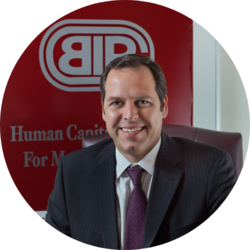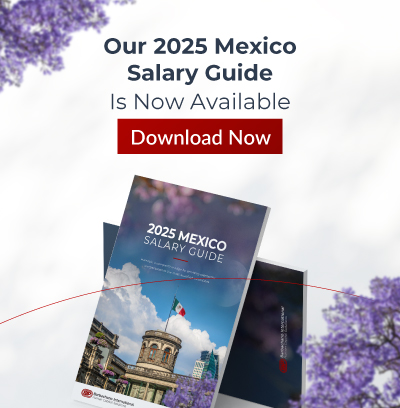
Executive search carries weight. A single misstep at the top can derail transformation efforts, hurt morale, and erode credibility with C-suite and the board. And while companies are becoming more disciplined in how they hire: investing in assessments, structured interviews, and competency models, many still miss what matters most.
The problem? They’re solving the wrong issue.
Too often, executive hiring becomes a checklist exercise: strong resumes, impressive interviews, recognizable company logos. But the real predictors of success at the executive level go beyond experience and charisma. They live in judgment, influence, and the ability to lead in complex, shifting environments.
In our work with boards and C-suite teams across the U.S., Mexico, and Latin America, we’ve seen four key mistakes that quietly undermine even the most well-run searches. These are the ones rarely discussed, yet they’re the root cause of costly turnover and misalignment down the line.
1. Mistaking Confidence for Capability
At the executive level, interviews tend to be polished. Senior candidates know how to take control of a room, craft a compelling story, and project certainty. But too often, that confidence is mistaken for actual readiness.
Harvard Business Review points out that overconfidence and charisma are frequently confused with competence, especially in male candidates. This can lead organizations to promote people who are bold rather than capable.
We once evaluated a candidate for a CEO role in Latin America who had a standout presence and a track record of fast promotions. But in-depth references revealed a pattern: early enthusiasm followed by resistance and morale issues six months in. The team saw him as decisive but out of touch.
What to do instead: Use structured behavioral interviews that assess responses to uncertainty. Probe for blind spots, reversals, and lessons learned, not just victories. Confidence should never replace critical thinking.
2. Skipping a First 90 Days Readiness Assessment
Most hiring processes focus on the past. But what happens after the offer is signed matters just as much. When new executives struggle, it’s often because no one assessed how they’d navigate their first few months.
According to MIT Sloan Management Review, many new CEOs underperform in their first year because they focus too quickly on delivering results instead of building trust, alignment, and stakeholder clarity.
In one recent CFO search, finalists were asked to present their first 90-day plan. One candidate stood out. He showed a stakeholder map, assessed finance capabilities early, and prioritized trust-building with plant leadership. That kind of intentional preparation signals real readiness.
What to do instead: Require a 90-day roadmap in the final interview round. Candidates who come prepared show they are oriented toward execution, not just past accomplishments.
3. Overlooking the Followership Factor
Most leadership assessments focus on presence, decision-making, and results. But one element often goes ignored: is anyone willing to follow this person?
Executive roles are about influence, not just skills. Successful leaders know how to rally teams across functions and even continents.
Research from Deloitte highlights that inclusive leadership, which emphasizes empathy, authenticity, and collaboration, is critical to creating trust and engagement. These traits drive followership and don’t always surface in standard interviews.
In a recent VP of Operations search in Mexico, the internal favorite had stellar credentials. But deeper references showed weak followership in cross-border settings. Another candidate, less decorated on paper but stronger in empathy and relational influence, earned the role and drove early alignment and momentum.
What to do instead: Go beyond credentials. Ask former teams about the candidate’s impact. Observe how they interact with colleagues at all levels. Followership matters, especially at the top.
4. Failing to Test for Judgment in Ambiguity
Most interviews reward clear narratives. But executive roles are rarely that tidy. Leaders must make high-stakes decisions with incomplete information, evolving priorities, and conflicting pressures.
McKinsey’s research on CEO transitions shows that successful leaders navigate ambiguity not just with decisiveness, but with curiosity and coalition-building. They adjust direction based on real-time learning and collective insight.
What to do instead: Integrate scenario-based questions into your interview process. Present a realistic, multi-stakeholder challenge. Pay attention not only to the conclusion, but to the candidate’s logic, stakeholder engagement, and ability to pivot.
Don’t Just Hire for the Past
The best executive hires are not always the most confident, most polished, or most credentialed. They are the ones who are best prepared to lead in your context through uncertainty, with empathy, and from day one.
At Barbachano International, we’ve seen firsthand that leaders who go beyond the expected drive faster alignment, deeper trust, and sustainable results. They build real followership. They listen first. They ask better questions. And they succeed not because of where they’ve been, but because of how they lead now.
If your next hire is critical, don’t just ask who they were. Ask who they will be and what difference they will make in the moments that matter most.

By Fernando Ortiz-Barbachano
President & CEO of Barbachano International
Barbachano International (BIP) is the premier executive search and leadership advisory firm in the Americas with a focus on diversity & multicultural target markets. Since 1992, BIP and its affiliates have impacted the profitability of over 50% of Fortune 500 Companies. BIP has been recognized by Forbes as Americas’ Best Executive Search Firms and currently ranks #8 and #3 on the West Coast.

